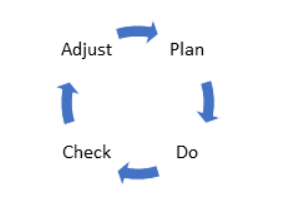SG Subscription Exclusive
“What is good enough today, might not be good enough tomorrow”: Creating a Culture of Continuous Improvement for Safeguarding.
Join us for a full day of expert insights from leading academics and frontline practitioners from across the UK. Our speakers will delve into the complexities of Contextual Safeguarding, providing essential knowledge, practical advice, and best practice guidance for professionals working with vulnerable children.
Safeguarding Adviser Jo Perrin has written a blog for DSLs, DDSLs and SLT to really evaluate the safeguarding culture in their setting.
At SFE, our safeguarding advisers talk a lot about creating a setting-wide culture and ethos with safeguarding at its heart. Safeguarding is everyone’s responsibility – we know this inherently from working with children, but also our key statutory guidance documents tell us so. We also focus on consistency – what is wrong for child A, is wrong for Child B and no matter which adult they may disclose to, it should lead to the same action.
Despite our policies, procedures or best intentions, there is a slight risk that in practice this might be interpreted incorrectly. Consistency does not mean rigidity. At times, systems and processes need to change to meet need and improve, but you can still have a consistent approach with safeguarding being the focus of our actions.
Creating and maintaining a culture of continuous improvement is crucial. Culture can’t be stagnant, it has to improve and adapt. This is really about creating a mindset in all your staff, it’s not just about having a set of rules and procedures that everyone has to follow.
An internet search will quickly demonstrate that the idea of continuous improvement comes from the corporate world. Various models, of varying complexity, are used, but in essence they look at the following: collecting data for the current position; self-assessing that position; looking at what you want to achieve and realistically judging your progress against that; setting goals for improvement and action planning; implementing the new changes; monitoring the results.
So it’s really this cycle – which those with a teaching background will recognize as not dissimilar to how we are taught to plan lessons:

So, what might this look like in terms of leading safeguarding? Here are some pointers to note and consider for your leadership of safeguarding:
- Any change you implement might lead to incremental improvement, not a huge change at once, but over time that can shift the safeguarding ethos in your setting and improve outcomes for children – so persistence is key. Small change is still positive and often has a better chance for long-term retention.
- Be aware from the outset of the end goal of any change you are implementing. What improvements do you want to see? Communicate your Key Performance Indicators (KPIs) to all staff and encourage their feedback on that. For example, if you start to include regular safeguarding slots in your training schedule in order to keep safeguarding at the forefront of staff’s minds – what would show you that was working? Would it be more “cause for concern forms” completed overall? Would it be different staff than usual completing the forms? Or would it be better clarity of language in the forms to detail indicators of abuse? These are all similar, but distinctly different, KPIs. What are you aiming for? – is it increased engagement from all staff or is it increased accuracy in form-filling? Or does one need to be established before the other?
- If one of your KPIs for change has nothing to indicate it is working, then ask why. Is it not framed correctly for your setting? Is there a further training need for staff? Is the problem with change actually a logistical issue? For example, if your KPI is to see an increase in wider support staff completing cause for concern forms, is the blockage to this the fact that you actually need more computers available for classroom assistants to record information in a timely way? It might be that it is the wrong time for this particular change, as something else might need to be improved first.
- An important part of continuous improvement is having the buy-in from all staff. So always check the basics – does everyone understand why things are changing? Are they clear what will improve for children, for themselves and for the organization if the change is successful?
- Open and transparent communication with all stakeholders is vital. You need to listen to everyone’s lived experience in order to plan and evaluate change in processes. Collect feedback and ideas – and this requires excellent active listening skills from DSLs and leadership colleagues. What actually works for staff in terms of your current procedures and what doesn’t? For example perhaps your lunchtime staff can’t access your online systems easily in their contracted hours, so you might choose to invest in some IT equipment for those staff and ensure they all know their log-in details. However, in your roll-out of this, you might get feedback from this group of staff that they are not confident in using the equipment, so you adjust the plan of continuous improvement to include specific training for these staff members on how to use the equipment. It sounds simple – but often it’s these simple stages that are missed out and so long term aims for improvement don’t come to fruition.
- Continuous improvement needs good leaders to act as role models – it’s a “do as I do, not just as I say” situation. So as DSLs and senior leaders, follow the procedures fully yourself, don’t be tempted to cut corners to save time. For example, if a child discloses to you, fill in the equivalent of the cause for concern form fully yourself, even if you’ll complete the DSL action section. Otherwise there’s a gap in the chain of evidence – and although practically it might be linked to and covered in your DSL action, it still needs the full information on there. If you cut corners, staff also might be tempted to, which would limit improvement overall.
- Trust is key to continuous and long-term improvement. Consider how your processes support this at all levels. For example, do you have a system where you allow the staff member with whom a child has the best relationship to determine when a child might be ready to disclose something and to lead that conversation with the child? In some settings a DSL might become involved too soon which inhibits the child from speaking as they don’t feel so comfortable with the DSL who they don’t know as well. Would you trust a staff member who knows the family to contact home, if safe to do so, post-disclosure – or would it always be the DSL? Is this about trust in that staff member’s knowledge and if so, does that point to a training need for continuous improvement?
- Long term learning is needed as part of continuous improvement – so consider when your safeguarding training is scheduled. Do you build on previous training to refine practice, or just repeat more or less the same annual training as last year? Who leads the training – just the DSL or variety of DDSLs with pastoral staff who might be able to give real life, anonymized, examples? KCSIE has said for years about staff contributing to safeguarding training due to their day to day knowledge – does this happen in your setting and is it planned or ad-hoc? When do we ask staff about their lived experience of safeguarding and what would improve it?
- Corporate businesses who use a model of continuous improvement often have a culture-based “onboarding checklist” for new staff, which includes training around the culture in the company and providing resources that explain the vision, values and mission of the organization – do you have something akin to this about your safeguarding culture. This goes further than having safeguarding training as a mandatory part of induction training, it allows new colleagues to understand the aims of your setting from the start.
There’s lots to consider – and this is just an introduction to thinking about continuous improvement as part of your safeguarding strategy for your setting. You can find lots of information relating particularly to the business sector online, which can be adapted. Our experienced safeguarding advisers at SFE can also support you with bespoke packages – you can contact us at [email protected] . We also conduct detailed Safeguarding Audits which could help with your initial self-assessment and data collection activities.
I’ll leave you with one last thought – it’s a natural tendency, when we want to evidence change, to go for the low hanging fruit, because it gives the impression things are moving forward and improving. The problem with this is that it might not address the real problems, or the true opportunities. An example is where settings have a fantastically detailed staff training schedule, but the quality and quantity of staff completing concern forms is still not adequate. If you consistently go for just the low-hanging fruit, you might feel there’s been progress and a tick-box has been filled in, even though you are possibly going to see the same initial problems reoccur in the long-term. There is still a time and a place for picking off some low-hanging fruit but you may need to aim higher up the tree.
About the Author
 Jo Perrin - Interim School Support Lead, Adviser, Services For Education
Jo Perrin - Interim School Support Lead, Adviser, Services For Education
Jo Perrin is a seasoned Education Adviser with a strong background in safeguarding. She has held key roles as a Designated Safeguarding Lead and pastoral lead in the education sector. Facilitating training to enhance the knowledge and skills of professionals working directly with children and young people is her passion.
With a wealth of experience in teaching PSHE and expertise in childhood trauma from her time as a foster carer, Jo is dedicated to supporting organisations that work with children and vulnerable adults on safeguarding issues. She is actively involved in professional safeguarding groups in the West Midlands and is currently collaborating on a research project with colleagues from the University of Birmingham and the NHS focusing on FGM awareness within communities. Jo’s has worked as a West Midlands' Adviser for national PSHE resources, presented at the Sex Education Forum National Members' Event and authored an advertorial for PSM magazine and an article for SEND magazine.
Jo's expertise extends to training on topics such as Safer Recruitment and Mental Health at Work. She is also a facilitator for the nationally recognised NPQSL qualification, supporting senior leaders in education. Her contributions to publications and development of resources for RSE provision have been well-received by schools nationally and internationally.
With her extensive experience and dedication to professional development, Jo Perrin is a highly respected figure in the field of education. Her guidance on safeguarding, mental health awareness, personal development, and relationships education is highly valued within the industry.
NEED SAFEGUARDING SUPPORT AT YOUR SCHOOL?
Our expert advisers can provide in-school visits to deliver sessions on any specific safeguarding issues that are relevant to your setting. We also offer consultancy and a detailed safeguarding audit. We will work with you to understand your exact requirements.
Get in touch with us today if you’d like to discuss bespoke Safeguarding training for your school.
find out more

 Lucie Welch – Adviser, Services For Education
Lucie Welch – Adviser, Services For Education


